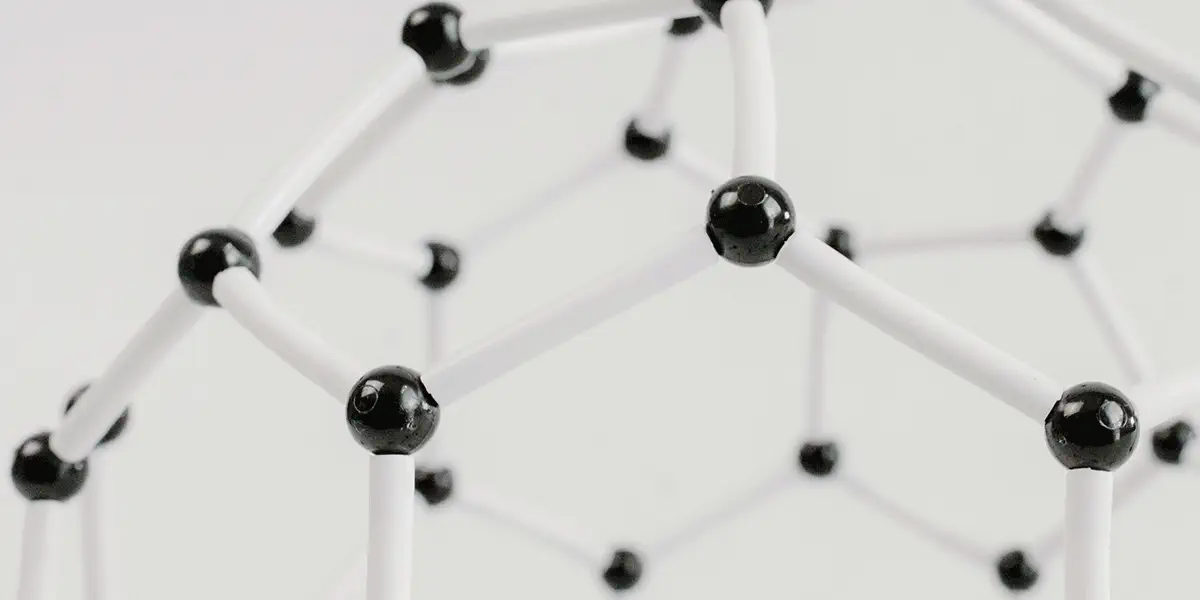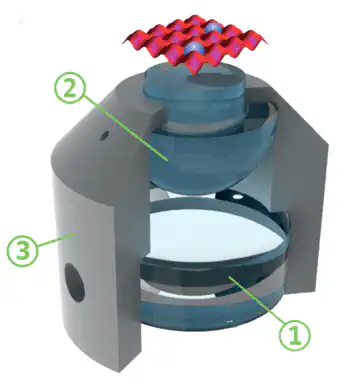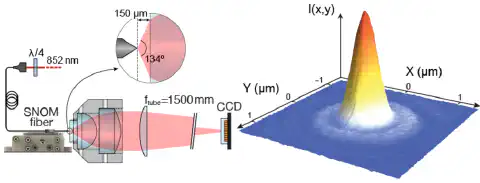
Aspheres for a fluorescence microscope
Reference project
Lens with high NA for obtaining quantum information
The aim of this customer project was the development of a lens for a fluorescence microscope by the Institute of Applied Physics at the University of Bonn. This focuses on the acquisition of quantum information about individual atoms, precise investigations for imaging cold cesium atoms which are enclosed in optical lattices. asphericon developed and manufactured aspheres with high NA for the system, consisting of two lenses which can withstand the high demands on temperature and outgassing rates.
Project details
The Institute of Applied Physics at the University of Bonn is conducting research with unprecedented spatial resolution in the field of imaging and optical control of ultracold cesium atoms trapped in an optical lattice. In order to view every single atom separated in the lattice by 500 nm, the researchers needed a lens with a high numerical aperture (NA). Imaging systems with high NA are characterized by a short working distance of < 1mm. The lens had to be able to work directly in the ultra-high vacuum (~ 10-11 mbar), where the atoms can be captured and manipulated with laser beams. In view of the high vacuum requirements (e.g. temperature, outgassing rates), no system of this sort was available on the market at the beginning of the research. The institute itself therefore developed and established the characteristics of a two-lens system. asphericon developed and manufactured the aspheric lenses required for this with a nominal NA of 0.92. After a thorough tolerance analysis, all deviations were selected in such a way that they exceed the manufacturing tolerances by at least one order of magnitude.
Project realization
Both lenses made of N-SF10 were manufactured by asphericon and placed in a ceramic mount (Al2O3). The optical power was characterized by measurement using the point spread function. Due to the high NA of the lens, this was carried out with circular polarized light emitted by an aluminum-coated, tapering optical fiber tip with a tip diameter of only 100 nm. By this method it was possible to show that the performance of the lens at full NA is diffraction limited (Strehl ratio > 0.8), which can be attributed above all to the high quality of the optical surfaces.
Construction of the objective lens
Objective lens consisting of: (1) an asphere of Ø 25 mm, (2) a sphere with Ø 20 mm and (3) a ceramic mount.

Fig. 1 Dual-lens objective with high NA, compatible with the ultra-high vacuum environment.
Characterization set-up
The light emitted by a SNOM fiber tip is collimated by the lens with high NA and focused on a CCD camera.

Fig. 2 Set-up for measurement of the point spread function and the measurement achieved
Optics for the Institute of Applied Physics at the University of Bonn at a glance:
- Development and production of unique aspheric lenses (NA = 0.92) which can be used in ultra-high vacuum with large temperature fluctuations
- Production of a sophisticated lens design with Strehl = 0.99
Further information: C. Robens, S. Brakhane, W. Alt, F. Kleißler, D. Meschede, G. Moon, G. Ramola, A. Alberti: „High numerical aperture (NA = 0.92) objective lens for imaging and addressing of cold atoms“, In: Optics Letters, Vol. 42 (2017), Issue 6, pp. 1043-1046

